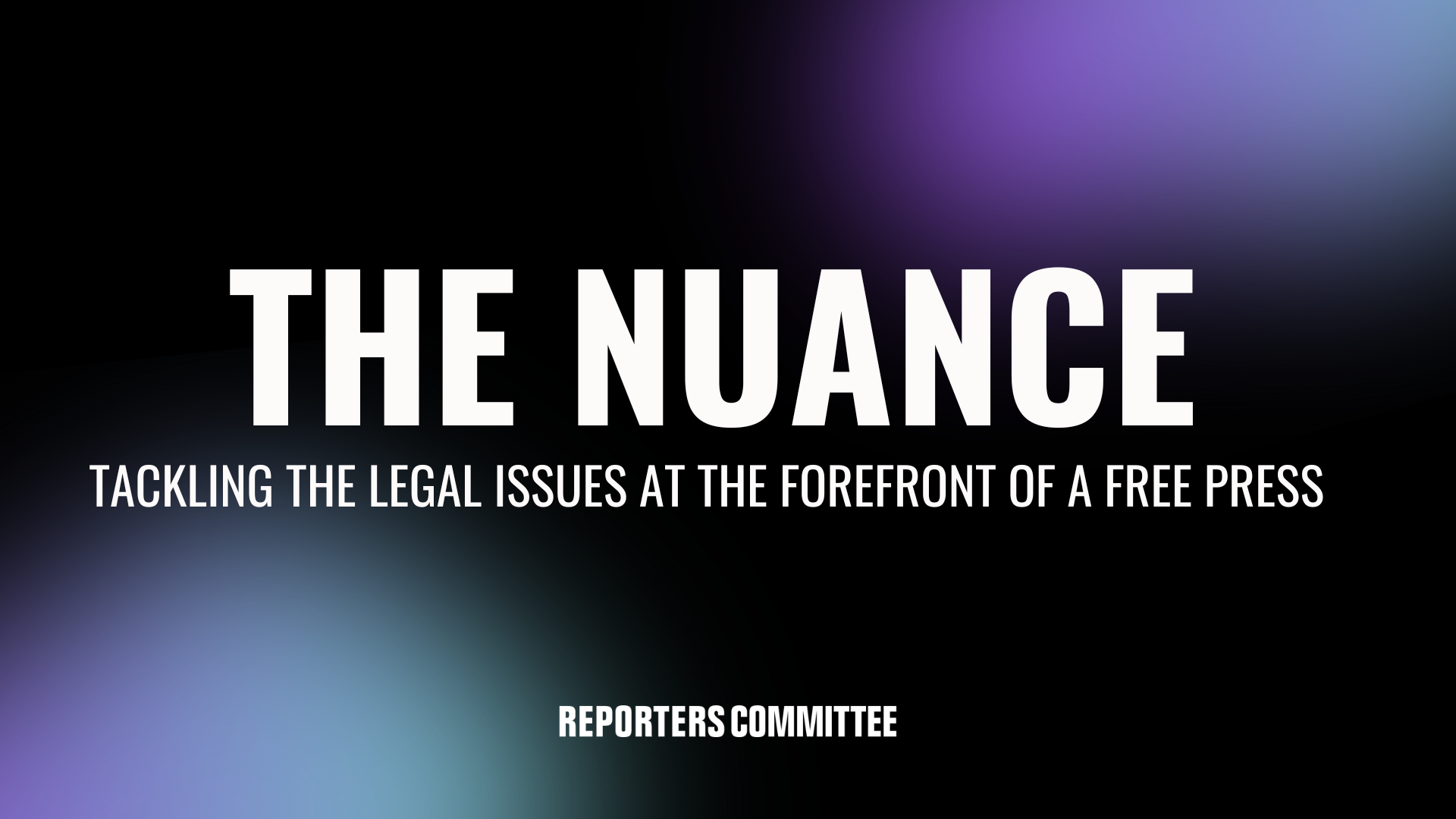New PBS doc highlights importance of unfettered newsgathering at protests

If you like this post, sign up to get The Nuance newsletter delivered straight to your inbox every Sunday night!
PBS’s American Experience has a new episode out, “The Riot Report,” which looks back at the Kerner Commission, the inquiry launched by President Lyndon Johnson to examine the roots of the riots during the “long, hot summer” of 1967. It’s a compelling documentary in its own right, but one sequence stood out: an interview with Harvard professor Khalil Gibran Muhammad, where he describes how the commission’s report found that multiple accounts of snipers during the riots, which prompted an aggressive police and national guard response, were in fact friendly fire.
That finding is of contemporary relevance. Ever since the nationwide protests in 2020, my colleagues and I at the Reporters Committee have been trying in earnest to develop the law around whether journalists should be permitted by law enforcement to remain on the scene, even when police have the authority to remove members of the public. (Perhaps surprisingly, there isn’t a lot of caselaw on that specific question.)
Typically, the argument against letting journalists remain on the scene is that they do not have “special rights” under the First Amendment. If it is lawful to disperse members of the public at an unlawful assembly, the argument goes, then it is lawful to disperse journalists.
A few courts, however, have disagreed. They found that letting journalists remain at the scene to cover the police response to protest activity isn’t about special rights for journalists. Rather, under various First Amendment doctrines, the police response to unlawful activity has to be tailored to address that activity. And removing journalists engaged in lawful newsgathering from the scene fails that tailoring because it doesn’t advance public safety and it shuts down public visibility into police activity.
That’s where the Kerner Commission comes in. The full report — which was a national bestseller along the lines of the 9/11 Commission during the 2000s — includes an entire section on the media response to the 1967 riots, including the sniper findings.
As we described in our friend-of-the-court brief to the U.S. Court of Appeals for the Ninth Circuit in Index Newspapers v. U.S. Marshals Service, the commission’s report “concluded that the government’s control over information about the reality of the riots had contributed to a misleading public sense of the extent of the violence.” In one instance, journalists who managed to reach the scene realized that what police had described as “nests of snipers” were, in fact, “the constituted authorities shooting at each other.”
The Kerner Commission found that when journalists were forced to rely on official accounts of the riots, the reporting naturally ended up skewed. And, it said, “more first-hand reporting in the diffuse and fragmented riot area should temper easy reliance on police information and announcements.” As we noted in the Index Newspapers brief, the government’s position in that case — that journalists have no “special right” to remain on the scene — “renews all of these same, old risks” that the public’s perception of protest activity will be distorted because it is getting only one side of the story.
Fortunately, to the extent that the courts and U.S. Justice Department have grappled with the “special rights” question recently, they’ve credited the tailoring approach.
In Index Newspapers, for instance, the Ninth Circuit wrote that, in barring police from removing reporters from the scene of protests, “the district court did not grant a special exemption to the press; it found that dispersing the press was not essential to protecting the government’s interests.”
And, in its 2023 report on the civil rights investigation into the Minneapolis Police Department, the Justice Department wrote that restrictions on newsgathering must still “leave open ample alternative channels” for that specific activity, and that “[b]lanket enforcement of dispersal orders and curfews against press violates this principle because they foreclose the press from reporting about what happens after the dispersal or curfew is issued, including how police enforce those orders.” The Justice Department is also working on national guidance on best practices for police-press interactions at protests, which may (we hope) make the same point. (The Reporters Committee has helped coordinate input from news media representatives to the guidance.)
It’s important to note that the Kerner Commission wasn’t really criticizing either the press or law enforcement. Rather, the report was describing the natural “fog” surrounding mass civil unrest. As we approach an election season that is likely to feature mass demonstrations, it’s more important than ever that police and press define their lanes with clarity, and that press be able to serve their role effectively and safely as the public’s eyes and ears. In that, this lesson from the long, hot summer of 1967 remains as fresh as ever.
The Technology and Press Freedom Project at the Reporters Committee for Freedom of the Press uses integrated advocacy — combining the law, policy analysis, and public education — to defend and promote press rights on issues at the intersection of technology and press freedom, such as reporter-source confidentiality protections, electronic surveillance law and policy, and content regulation online and in other media. TPFP is directed by Reporters Committee attorney Gabe Rottman. He works with RCFP Staff Attorney Grayson Clary and Technology and Press Freedom Project Fellow Emily Hockett.